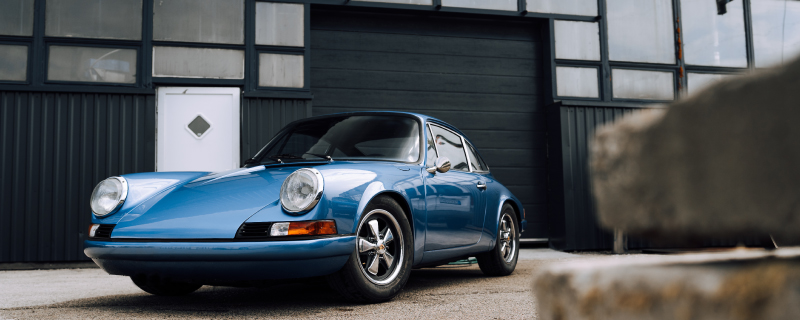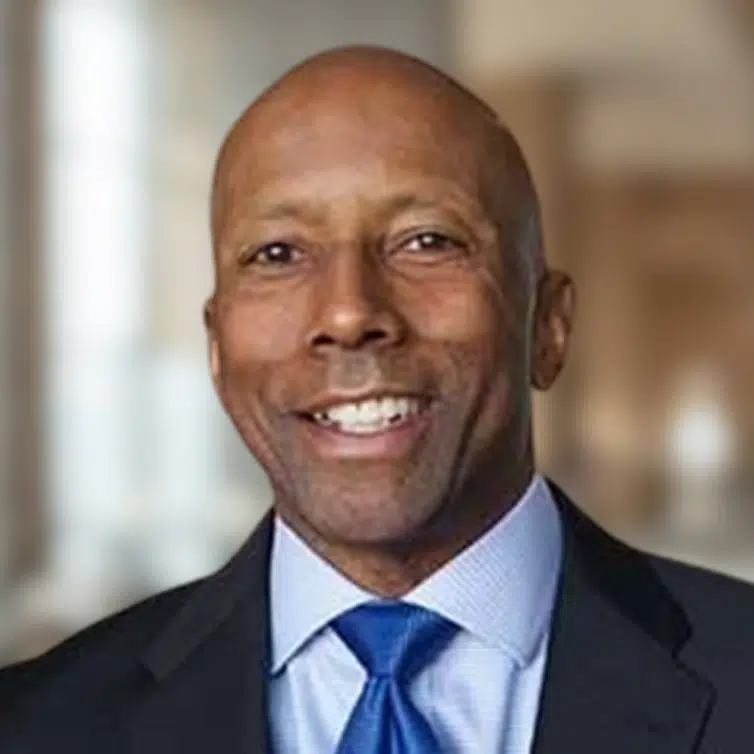
John Tomlin’s passion for cars accelerated the way it did for many people who came of age in the mid-20th century muscle car era – by tinkering with them.
John, a long-time Aspiriant and Stanford Investment Group client whom I’ve had the pleasure of serving along with Managing Director Helen Dietz, had a powerful influence in his father. In the pre-NASCAR days, his dad was an “engine whiz” mechanic for several professional racing teams. So his father always had cars to fix up as a hobby, and John was by his side.
In college, John was able to buy his first hot rod — a 1956 Chevy convertible. He and dad spent the summer fixing it up. After college, he bought a 5-speed, high-performance ’69 Chevelle. He had a Datsun 260Z in the 1970s. An old girlfriend led him to a fondness for Porsches — so he eventually got one of those.
While John has always had four-wheeled toys, collecting didn’t really start until after his kids graduated from college. “The biggest raise I ever got was when I stopped paying for college,” he joked.
Still, he’s “no Jay Leno.” He’s more of a hobbyist, who today owns six sporty vehicles:
• 1961 MGA Roadster (less than 1,000 made that year)
• 1965 Porsche coupe (his first “investment” car)
• 1971 DeTomaso Pantera (fastest production car you could purchase at that time)
• 1972 Alfa Romeo Montreal (an affordable Marcello Gandini design)
• 1994 Jeep Wrangler (his Lake Tahoe off-roader)
• 1995 BMW 850CSi (an impulse buy that goes 150+ mph)
And he enjoys them … driving them regularly and socializing with other car lovers in the associated auto clubs.
“The joy of people seeing you drive them is fantastic.” he said. “It’s a very positive experience.”
Working with John and his wife, I know that his car collection is important to him, but it’s not the only thing. Owning any type of collection may be an investment, but it’s certainly an expense and an asset that should be carefully considered as part of any wealth plan.
I had the pleasure of chatting with John about his car collection and wanted to share some key considerations if you find yourself steering down this road.
Plan for the long-term costs
“You need to make sure, when you budget buying a new car, it’s more than just the purchase price,” John advised.
Three top costs to plan for are maintenance and improvements, storage, and insurance.
Most car lovers purchase older cars with the intention of fixing them up, unless it’s already in pristine condition. Some may need a lot of body or engine work, others get blinged out. And older cars tend to break down — usually not in convenient places.
That’s why John says the biggest expense is maintaining them. It’s not easy to find the proper parts, and it’s even harder to find a good mechanic. While he can do some basic maintenance work himself, he always consults experts when he needs extra help.
“The good mechanics are retiring,” he said. “And a lot of mechanics these days are not as skilled in these old ‘analog’ cars.”
Once your collection gets large enough, storing them can be another large expense.
“When I first started doing this, I didn’t have a lot of money, so I was begging and borrowing garage space from friends,” he said.
But after a successful career as a vice president at a Silicon Valley tech company, and with careful financial management, he was able to build a new home with a large garage in Carmel Valley, Calif.
If that’s not an option for you, you’ll need to consider renting or buying secure space. High-end car condos seem to be the new thing.
Finally, there’s insurance. When you get into the collector realm, ordinary car insurance will probably not cover the investment you’ve made into the coach. Consider a collections policy that’s written specifically for valuable autos. John has a policy with Hagerty where he and the carrier agree on the insured value, and the premium is priced to that value.
Consider whether it’s really an investment
“I bought the cars because I like them; I enjoyed driving them. But like for many of us car collectors, they have increased in value and they became an investment,” John said.
He said his collection is worth more than $250,000 today, but it didn’t start that way. John said he focused on cars that were interesting looking and unique that he thought would break even from a cost perspective.
Some people might spend hundreds of thousands, or even millions, of dollars on a car. Like any investment, it pays to do your research. The greatest value for John’s cars is in their low production numbers. Aside from the Jeep, only about 1,000 to 4,000 of each of the other cars was made, he said.
Not all cars will increase in value, however. Always consider the costs to maintain, store and enjoy them — whether you drive them or tow them around to various car shows. Some classic cars can partially earn their keep as movie extras and calendar models.
Make them a part of your wealth planning
Because the costs of maintaining a car collection, large or small, can be considerable, it’s important to budget them appropriately in your wealth plan. You, your partner and family likely have other financial obligations and goals that need to be considered in long-term planning.
John and his wife enjoy traveling well … and did a lot before COVID-19. As much as he loves his cars, he keeps his interests balanced. “I’d sell cars to make sure we travel.”
Because his collection is small, we budget his costs as part of his regular expenses. But a larger, Leno-sized fleet would probably need more planning.
Additionally, the cars should be included in estate planning. If you may have a taxable estate, be sure to keep current appraisals. Also, discuss with your heirs whether they want the cars, and which ones. John says his adult children are busy raising families, and the grandkids are too young to drive. With the push for environmentally friendly electric cars, he recognizes his children may not even want his cars in the future.
“We’ll see what my kids’ interest is. It depends on where everybody is in their financial life.”
Today, he’s looking for his next big car purchase, somewhere in the 2000 to 2010 year-range. He has room in his garage for one more. (He agreed with his wife to keep the garage, and thus the car collection, a limited size.) With his current financial plan, his price budget has expanded, somewhere in the $40,000 to $70,000 range.
“The key is to spend your money wisely. You earned it, use it,” John said. “I’m not giving it all to my kids.”

 Talk to us
Talk to us 



